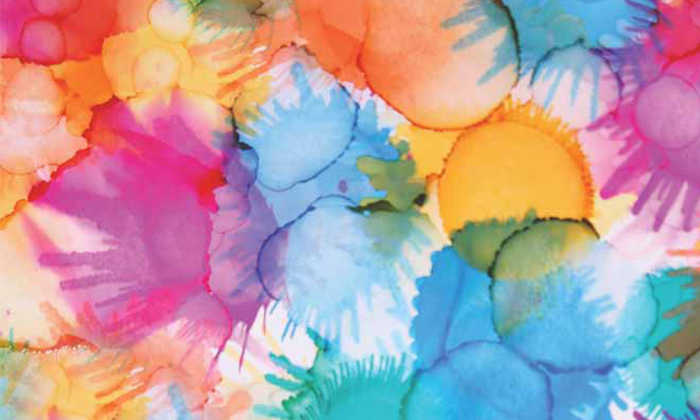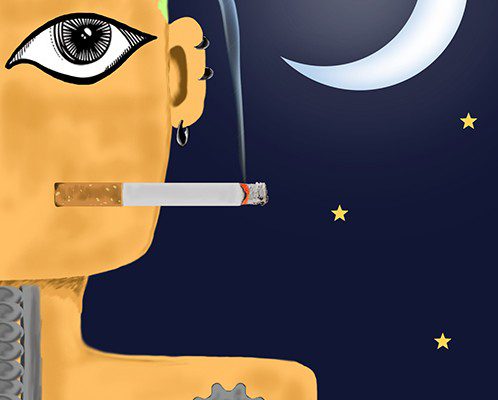To be honest, I got the idea for this column when I was hit by my first water balloon of the Holi season. Miraculously, I made it until the day before Holi before this projectile exploded across my chest. (As a foreigner riding around on a bicycle – wearing a geeky white helmet at that – I was certainly an appealing target and drew my share of balloons. The kids in my neighbourhood just have bad aim.) My shirt dripping wet, my skin stinging, I began grumbling about the punk kids these days and the secularised festivals that are being forced onto everyone.
My initial view of the festivities was not so jaundiced. My first exposure to Holi was literary. Towards the beginning of Vikram Seth’s massive tome ‘A Suitable Boy’, a brilliant set-piece depicts the Holi celebrations in the fictional town of Brahmpur in the 1950s. In the book, everyone has a grand old time as normal relations and hierarchies are subverted; bhang is consumed, a pompous professor is doused in water, harmless flirting takes place, Hindus and Muslims enjoy ghazals together.
This idealised picture of Holi is also reflected in the festival’s Wikipedia page – certainly not the most accurate source of information, but a good gauge of popular perceptions. According to Wikipedia, then, “One of Holi’s biggest customs is the loosening strictness of social structures, which normally include age, sex, status, and caste. Holi closes the wide gaps between social classes and brings Hindus together. Together, the rich and poor, women and men, enjoy each other’s presence on this joyous day.” In this view, Holi takes its place amongst ancient festivals like Saturnalia, as well as more modern ones like Carnival, in which – at least for a day – power dynamics are reversed and the tensions of society can be released.
My first Holi in India (Pune, to be precise) confirmed this picture of the festivities. As I made my way to a friend’s Holi party, kids from the basti near my house giggled as they doused me in water and threw colours. These kids lived on the margins of society, but on Holi they had a chance to ambush the tall pale foreigner they always saw walking through their neighbourhood.
This year, in Delhi, I began to realise that the event was not, perhaps, as subversive as I had first thought, at least not in this sprawling megacity. I was still being targeted, but it was precisely because I was an outsider, not part of the normal social structure. I could be splashed and sprayed without fear of retribution. The rich uncles or imposing sardars were never made to dodge balloons; their high status was never questioned. Instead sabzi-walas and scrawny school kids had to run the gauntlet of multi-story flats, each balcony hiding potential artillery.
And then there’s the whole gender dimension to the festival. Far from overturning the standard patriarchy, Holi all too often gives licence to all sorts of eve-teasing, harassment and molestation. In Delhi University women’s hostels, the girls are literally locked inside to protect them from the marauding masses. (In the boys’ hostel, they get bhang, while in the girls’ hostel, they get Domino’s pizza.)
Even Bollywood has recognised that the very thing that makes Holi exciting – the loosening of boundaries – also leaves room for lurking danger and aggression. Most disturbing is the Holi scene from ‘Damini’, in which the title character witnesses the rape of her maid by her brother-in-law. Afterwards, she is pressured not to hurt the family by revealing the crime. Indeed, the family hardly sees it as a crime, as the maid is – in their eyes – hardly worthy of defense. Not only is she a woman, but she is from a lower socio-economic background.
The Bollywood thriller ‘Darr’ also includes a prominent, and unsettling Holi scene, as stalker Shah Rukh Khan takes advantage of the free-wheeling atmosphere of celebration to enter Juhi Chawla’s house. Again, Holi’s supposed freeness gives space, not for playful boundary-breaking, but for violent trespasses.
Of course, it’s not just gloom in Bollywood; the idealised Holi gets some exposure too. In ‘Mangal Pandey’, this historical hero shows us the joys of Holi, and – reaching back into Bollywood history – Saudagar features the reconciliation of two sworn enemies during Holi festivities.
But these days, even Bollywood has grown disenchanted with Holi, no longer using it as a muse. As I had once idealised Indian festivals, now Bollywood has begun dreaming of the wild celebrations in NRI-friendly countries. The hugely popular ‘Zindagi Na Milegi Dobara’ is perhaps most famous for its portrayal of La Tomatina festival, which – like Holi – centres around the throwing of brightly coloured objects. But for this event, the objects in question are ripe tomatoes: Holi in monochrome. And the Spanish location gives it a glow of exoticism and “First World” glamour.
For the cream of the crop still stuck in India for Holi, they must make do with their own exclusive parties- far from the societal free-for-all envisioned by Wikipedia, Delhi Holi celebrations are strictly bound by class. Towards the top of the social ladder are the parties held in south Delhi’s lavish farmhouses, with entry charges starting at Rs. 1000. Within the high gates of the farmhouse, with live music and plenty of food and drink, the revellers are encouraged to forget the larger world outside.
As for me, I stayed at home for Holi this year, enjoying the shrieks outside while enjoying a leisurely coffee within. Which still didn’t stop me from getting soaked by a carefully aimed balloon when I peeked out my front door to see what all the fuss was about.


